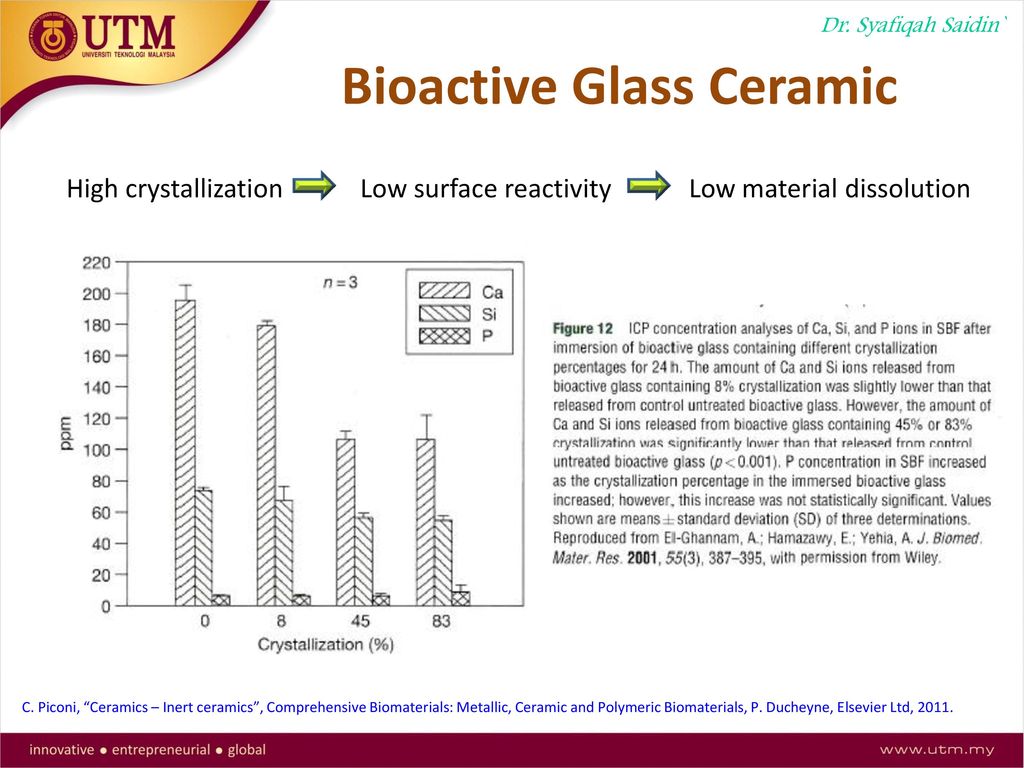This objective has been achieved through the development of a series of surface active bioglasses and bioglass ceramics.
Surface active bioglasses and bioglass ceramics.
Glasses are non crystalline amorphous solids that are commonly composed of silica based materials with other minor additives.
Bioceramics and bioglasses are ceramic materials that.
Now known that bioglass 45s5 bonds with bone rapidly and also.
Compared to soda lime glass commonly used as in.
A controlled release of ca p and na ions from the surface of the materials produces an alkaline ph and nutrient constituents at a time when the body can incorporate the ions into newly formed tissues.
Bioglasses and bioglass ceramics bioglass 45s5 1969 when first discovered and implanted the glasses did not form interfacial scar tissue isolating them from host femoral bone could not bdfbe removed from thii lheir implant sif iiite after a certain time.
Both bioglasses and bioactive glass ceramics have surfaces on which hydroxycarbonate apatite hca precipitates and crystallizes within an hour of implantation.
Proposes that a chemical transformation of the bioglass surface could.
The hca crystals provide a base for adsorption of components of the extracellular matrix and subsequent interactions with cells.
Bioactive glasses are a group of surface reactive glass ceramic biomaterials and include the original bioactive glass bioglass the biocompatibility and bioactivity of these glasses has led them to be investigated extensively for use as implant device in the human body to repair and replace diseased or damaged bones.










